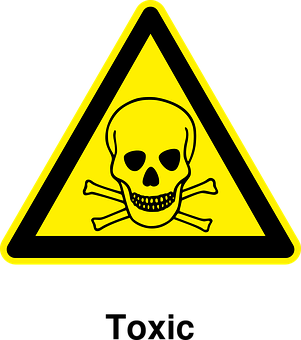Carbon monoxide (CO) poisoning is quite common in the United States. In most years, more than 20,000 people go to the emergency room with suspected CO poisoning and more than 2,000 have symptoms serious enough to require hospitalization. CO exposure is responsible for more than one half of the poisoning fatalities reported in this country every year. On average, more than 400 people here die from unintentional CO exposures each year. The death toll is even higher when suicides and fire-related incidents are included.
Carbon monoxide is a colorless, odorless, tasteless, non-irritating gas. Because CO has little if any warning properties, it has called “the silent killer”. Another factor that makes CO an especially dangerous toxic gas is the early symptoms of poisoning (such as headache, nausea, dizziness, and fatigue) are easily confused with and often misdiagnosed as the onset of a cold or the flu, stomach virus, or other common diseases.
Excessive exposure to carbon monoxide results in a decreased level of oxygen in the body. The brain and other parts of the central nervous system are the tissues most sensitive to a lack of oxygen. The longer the brain is deprived of adequate oxygen, the more widespread the damage will be. Similar effects occur in muscle tissues. This is of special concern when the muscle involved is the heart. The individuals most at risk or carbon monoxide poisoning are infants, the elderly, and people with heart disease, anemia, or breathing problems.
The acute symptoms usually seen in cases of carbon monoxide poisoning depend on the level of CO and the duration of the exposure. Low levels of exposure can aggravate pre-existing cardiovascular problems such as angina pectoris. Symptoms seen in individuals with higher exposure levels can include headache, dizziness, nausea, vomiting, mental confusion, visual problems, fatigue, hypotension, and coma. Severe exposures can of course be fatal.
Depending on the level and duration of carbon monoxide exposure, delayed or chronic symptoms can also occur in CO exposed individuals. These symptoms can include hearing loss, peripheral neuropathy, memory problems, and difficulty concentrating. While there can be some recovery of mental function over time, many brain tissues damaged by CO show little, if any capability for regeneration. Similarly, severe CO-induced muscle tissue damage can be irreversible.
Common sources of carbon monoxide exposure include improperly vented cooking or heating devices, wood-burning stoves, tobacco smoke, and defective exhaust systems in vehicles. Workers in occupations in which routine exposures to CO occur include truck and bus drivers, mechanics, highway toll takers, garage attendants, and police officers. Everyone who drives or rides in a vehicle, especially in areas of congested traffic, has some exposure to CO.
The risk of carbon monoxide poisoning can be reduced or eliminated by taking the following steps:
- Install a battery-operated or battery back-up CO detector in your home and check or replace the battery when you change the time on your clocks each spring and fall.
- Have your heating system, water heater, and any other gas, oil, or coal burning appliances serviced by a qualified technician every year. Make sure your gas appliances are vented properly to the outdoors.
- Do not use charcoal grills, flameless chemical heaters, camp stoves, or generators in your home or attached garage.
- Never use a gas range or oven for heating. This can cause a build-up of CO inside your home, cabin, or camper.
- If you smell exhaust fumes in your vehicle, it is likely that CO is also present. Have a mechanic check out the exhaust system promptly.
If you suspect that you or someone you know may have been over-exposed to carbon monoxide, seek medical help as soon as possible. Emergency room staff should be trained to treat such poisonings. Be sure to let them know CO could be involved. As noted above, CO-related damage gets worse as time goes on, so don’t delay in seeking help.

